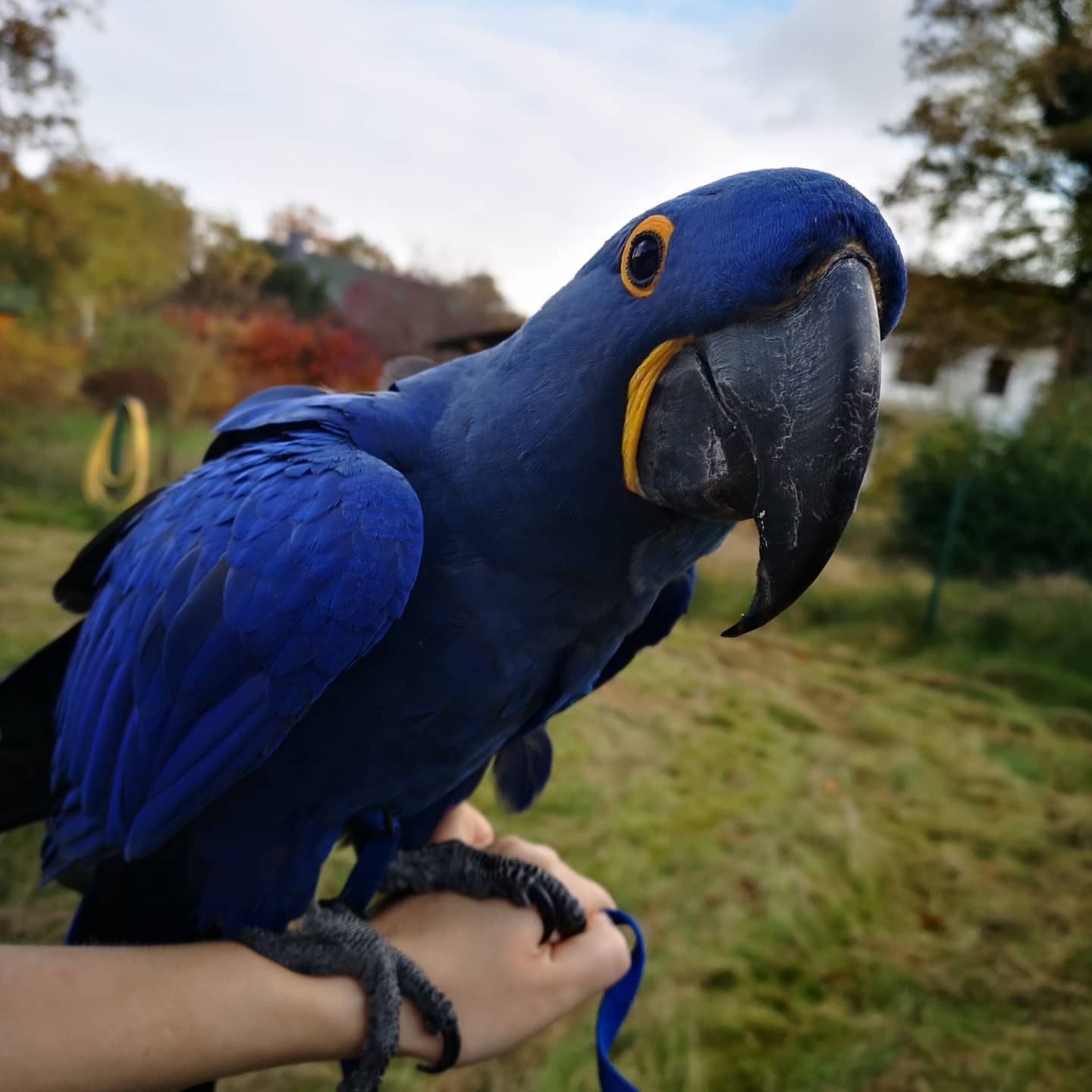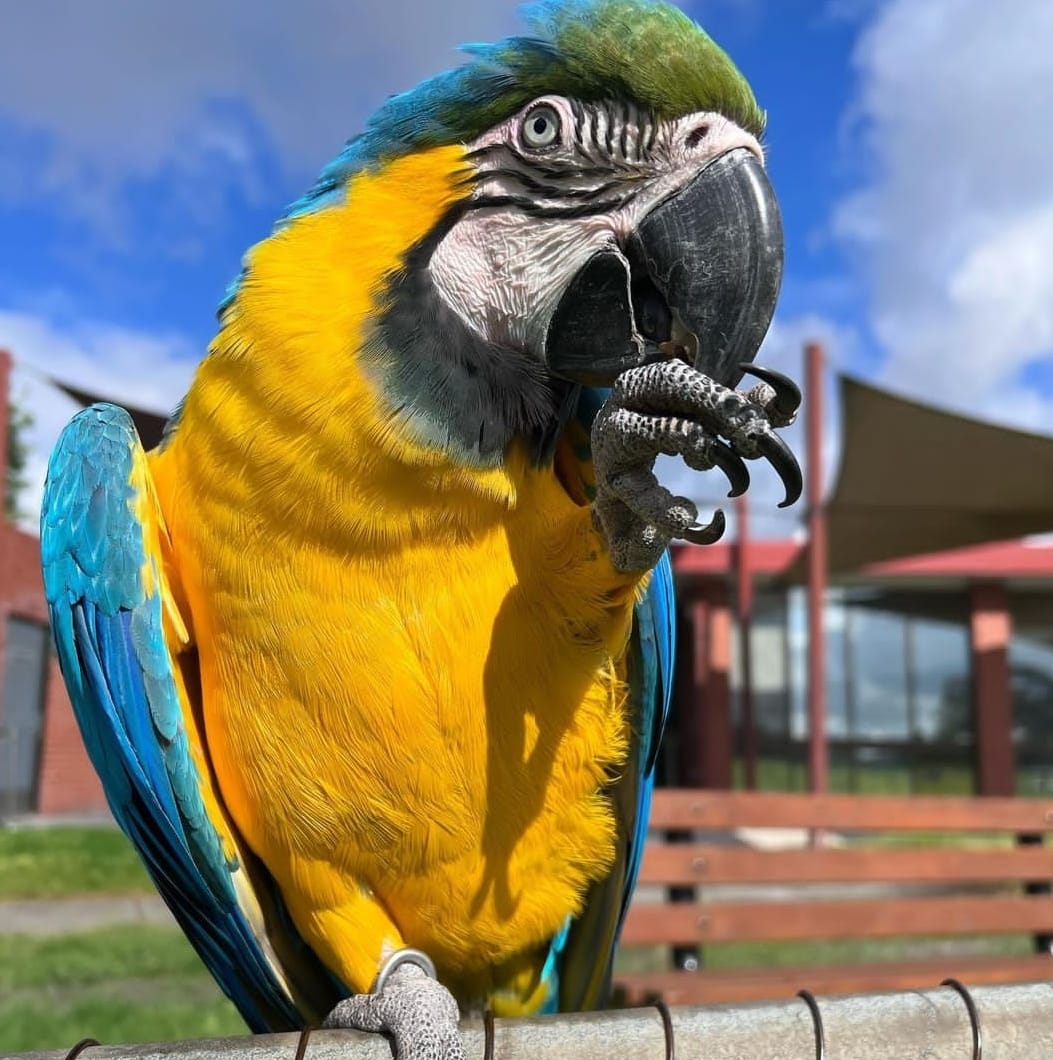You'll Never Guess This Leia Blue Macaw And Red Macaw's Bene…
페이지 정보
Letha 작성일25-02-13 03:50본문
 How to Tame a Blue Tallula indigo park mollie macaw and Red Macaw
How to Tame a Blue Tallula indigo park mollie macaw and Red MacawMacaws generally choose a mate for life and spend the majority of their time together sharing food grooming and caring for young. Unfortunately, these magnificent bird species are in danger of disappearing.
 Habitat destruction by humans, the cage bird trade and poaching are all major threats to this beautiful species.
Habitat destruction by humans, the cage bird trade and poaching are all major threats to this beautiful species.Great Green Macaw
The great green macaw (Ara ambiguus) is the largest parrot in Central America and one of the most striking birds found in the rainforest canopy. Its vibrant green plumage is enhanced by the red of its forehead and blue on its lower back, rump, and tail feathers. The tail and wings are both long and pointed which allows it to move easily through forest canopies. Its beak is long and strong, adapted to break open seeds and nuts. The great green Macaw is a frugivore and, as such is a key player in sustaining healthy ecosystems of the rainforest. Seed dispersal helps species of trees such as the maiz biological tree Dipteryx Oleifera to flourish, providing food for other animal species.
These magnificent birds live in small groups or pairs and spend the majority of their time flying high up in the canopy of the forest looking for Leia blue macaw And red macaw fruits, nuts and seeds. Nests are often found in hollow tree cavities which they line with branches or grass. The female will lay between two and three eggs that will incubate for about 26-28 days. Once the chicks hatch, males help feed them.
Captive macaws with great-green colors make great companion animals. They are playful, intelligent birds. However, it is crucial to keep in mind that these birds require plenty of space, Leia blue macaw and red macaw attention and patience in order to thrive. They are reported to bite and be destructive when bored. They also are susceptible to certain health problems, like proventricular dilatation, or macaw wasting.
The great green macaw is in decline, just like many other species in the tropical zone. Their habitat is being destroyed by logging, mining and agriculture as well as cattle ranching. The illegal wildlife trade and hunting for food is also affecting their numbers.
Protecting the habitat of these amazing animals is the only way to ensure their survival. By creating corridors between protected zones, these animals will be able to move freely and gain access to various sources of food. Ultimately, preserving the natural habitat of these beautiful birds will help to safeguard other species in danger that share their homes like the Blondie scarlet macaw bird Macaw and Yellow-naped Amazon.
Blue and Gold Macaw
This beaunicate many different emotions through a variety of vocalizations. They also display a variety courtship behaviors including cocking the head, flirting with raised wings, and blushing. They also show their emotions by swaying their tail feathers as well as bowing, prancing and dancing.
They are playful and love to chew on toys. As such, it is recommended that pet owners provide plenty of bird-safe, durable toys that can hold up to their strong jaw muscles. This will keep their teeth healthy and prevent the development of tartar and plaque.
Red-shouldered Macaw
Sometimes referred to as the Hahn's Macaw, this small bird is one of the most intelligent macaw species available. It has a strong bond with its human companions and is a strong talker who can master a variety of tricks. It is also calmer than other macaws. This makes it an ideal choice for people who are worried about the sound of a noisy bird. It is small and nippy, but it usually gets used to it and is extremely playful as an older parrot.
This bird is native in swamplands and savannahs as well as tropical lowland habitats throughout Brazil, Venezuela Guyana and South-Eastern Peru. The vibrant green color is perfect for camouflaging among the vegetation. It lays between two and five eggs and then incubates them for 24 days. After about two months, the chicks are ready develop into fetuses. The species usually couples for life and is often found in pairs.
In its natural habitat, it hunts for berries and flowers, nuts, fruits, seeds and leaves. The birds are known to eat insects, too. They are also known to congregate on cliffs of clay, which are thought to remove any toxins they may have ingested from their food sources.
Hahn's Macaws are susceptible to self-mutilation and feather plucking as well as nutritional disorders. They are also susceptible to proventricular dilatation and overgrown beaks. However, a well-balanced diet, regular veterinary checks and proper cage maintenance can help prevent these issues from forming.
This bird can live up to 50 years in the wild. It isn't typically available in pet stores that are large however it can be found at avian-specialty shops and from bird breeders. It is intelligent to a high level, however it can be challenging for those who are new to training. It is a good talker and can be taught to whistle, clap and dance.
Hahn's Macaws are extremely noisy and are not recommended for apartment living. These birds require a large cage with plenty of perches as well as food bowls. They must also be able to run regularly outside the cage. They are also strong chewers, and require a cage that is safe.
Blue-and-yellow Macaw
The Blue-and-Yellow Macaw is a large, beautiful tropical parrot. Like all Macaws, is monogamous and pairs for life. It also has a strong tendency towards mimicry which makes it a wonderful companion bird.
This species is native to South America, and can be found in a variety of habitats. Cloud forests, savannas, and rainforests are all possible habitats. IUCN has declared the Blue-and-Yellow Macaw endangered and conservation efforts have been launched to protect this beautiful bird.
The birds can breed when they reach the age of 3 or 4 years. It is believed that they will pair for the rest of their lives and will remain together until the death of one partner. The Blue-and-yellow macaw usually will lay between two and three eggs in a single nest. The eggs are incubated by the female, and the male will fight for the nest. Once the chicks hatch they become dependent on their parents for food until they are able to feather themselves and begin to feed themselves.
In the wild the birds are social animals and be seen in groups with other Macaws and other species of parrot. They are intelligent and can learn a variety of sounds. The Blue-and-Yellow is a skilled flyer, and can be seen soaring through the forest canopy and performing other impressive aerial maneuvers.
The Blue-and Yellow Macaw is a beautiful and charismatic creature. It is a wonderful choice for anyone seeking a pet that will bring joy and companionship.
This bird is stunning, large, tropical parrot that is native to South America. It is monogamous and mates for life and has a strong inclination toward mimicry. It is prone to form bonds with humans and can master a wide range of phrases and words.
The Blue-and-Yellow Macaw reaches breeding age when it is between 3 and 4 years old. Blue-and-yellow Macaws pair up for life and are found in small groups. The Melody blue spix macaw-and-Yellow species can be found in many habitats including cloud forests and savannas. The Blue-and-Yellow prefers build nests in tree cavities that they construct by using their powerful beaks. Females lay between 2 and 3 eggs, and will incubate them for around a month.
댓글목록
등록된 댓글이 없습니다.

















